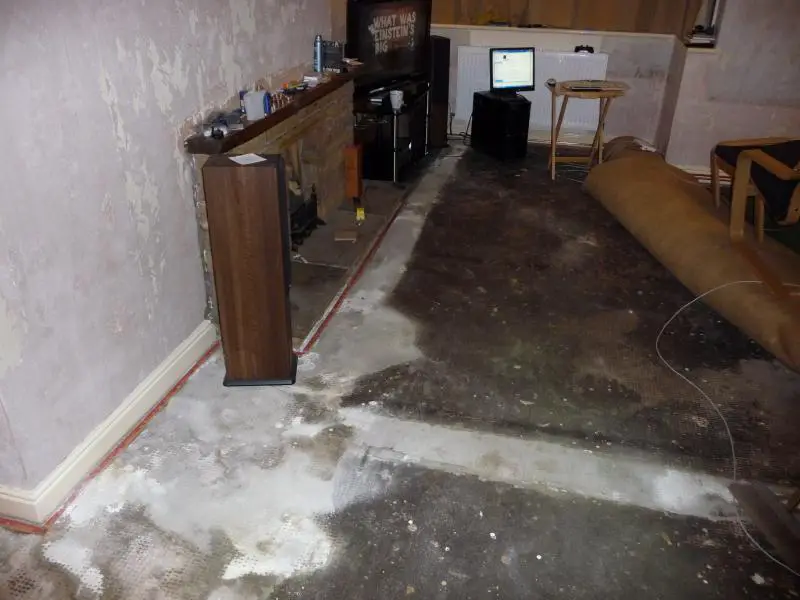Hi, I've had a look through the past dozen or so pages and can't find anything similar, sorry if I've missed a post.
I've just purchased a 1950's 3bed semi, at some point the previous owners (now deceased) removed the load bearing wall between front and rear rooms, removing the two back to back corner fireplaces in the process.
The flooring looks to be concrete with a black coating of some kind. There are occasional bumps (on average 70mm diameter and rising up to 10mm from surface).
My real concern and focus for this post are two filled in excavation type trenches running from each end of the house towards where the old fireplaces used to be. I am guessing here in thinking they used to have a gas pipe in, but not sure. These are prominent and show signs of efflorescence.
In one particular half of the room the floor has a noticeable rise in the middle particularly around the excavation. The change in height is about 10mm over 1m. There are no signs of cracking, radial or otherwise, however there is a slight change in tone when tapping the floor.
I have heard scare stories about the cost and actions associated with repairing sulphate damage to flooring and hope this wont turn into one of those.
I've included a couple of photos in case that may help.
Any suggestions or advice would be greatly appreciated as I've reached a standstill and cant consider leveling the floor off until I can find a solution.
Regards
Simon
I've just purchased a 1950's 3bed semi, at some point the previous owners (now deceased) removed the load bearing wall between front and rear rooms, removing the two back to back corner fireplaces in the process.
The flooring looks to be concrete with a black coating of some kind. There are occasional bumps (on average 70mm diameter and rising up to 10mm from surface).
My real concern and focus for this post are two filled in excavation type trenches running from each end of the house towards where the old fireplaces used to be. I am guessing here in thinking they used to have a gas pipe in, but not sure. These are prominent and show signs of efflorescence.
In one particular half of the room the floor has a noticeable rise in the middle particularly around the excavation. The change in height is about 10mm over 1m. There are no signs of cracking, radial or otherwise, however there is a slight change in tone when tapping the floor.
I have heard scare stories about the cost and actions associated with repairing sulphate damage to flooring and hope this wont turn into one of those.
I've included a couple of photos in case that may help.
Any suggestions or advice would be greatly appreciated as I've reached a standstill and cant consider leveling the floor off until I can find a solution.
Regards
Simon








